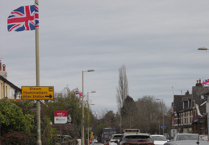Good old days?
Rather like the NHS, the (admitted) housing crisis is viewed, somewhat, through rose-coloured glasses when we look back.
I remember the housing situation, both public and private, was pretty dire back in the 1950s, 60s and the 70s. Council housing waiting lists were long then as they are now.
However, getting a council flat was the dream then – very, very few people believed ownership was either possible or even desirable.
My parents were finally offered a council flat in 1962 having qualified because the three of us had been sharing a single bedroom for more than ten years.
Here is an unvarnished snapshot of living in public housing 60 years ago:
- A five-storey 1930s building, with no lift.
- The first, third, and fifth floors had a communal washing room with a copper for boil washing, complete with a mangle.
- The second and fourth floors each had large rooms set aside for air drying wet washing. Drying on lines outside flats was not allowed.
- Each floor had rostered posted notices on which flat occupants were required to wash the communal stairs and landings that week.
- All rubbish disposed through chutes on each floor to a bin at ground-floor level. (No recycling.)
- A (live-in) caretaker employed to oversee and patrol.
- Each new resident provided with only bare floorboards which they were required to cover with linoleum at their own expense.
- Heating was through a fireplace. Individual coal bunkers (which had to be bought privately) were kept outside on the walkways.
- Distorted and ill-closing metal-framed Crittall windows led to ice forming on the inside of panes in winter.
- Bomb shelter surface-level building still in place in the courtyard, although with now sealed entrances. (Were we expecting hostilities to break out again, I wonder?)
- Everyone had cash prepayment gas and electricity meters.
- In the long winter of 1963 coal could not be delivered because horses could not get traction in the snow and ice. (Otherwise coalmen would hump bags over their shoulder up all five floors!)
- Communal chimney fires a regular problem, through occupants failing to arrange chimney sweeping.
- No carbon monoxide poisoning safety checks for bathroom geysers.
Sound insulation was non-existent, but there was no damp, mould or fungus. And no vermin.
However, the council did provide five yearly cyclical internal repainting.
Overall verdict: pretty grim...
But on the other hand, rents were low and tenure was secure.
Peter Desmond-Thomas
Drayman’s Way, Alton





Comments
This article has no comments yet. Be the first to leave a comment.